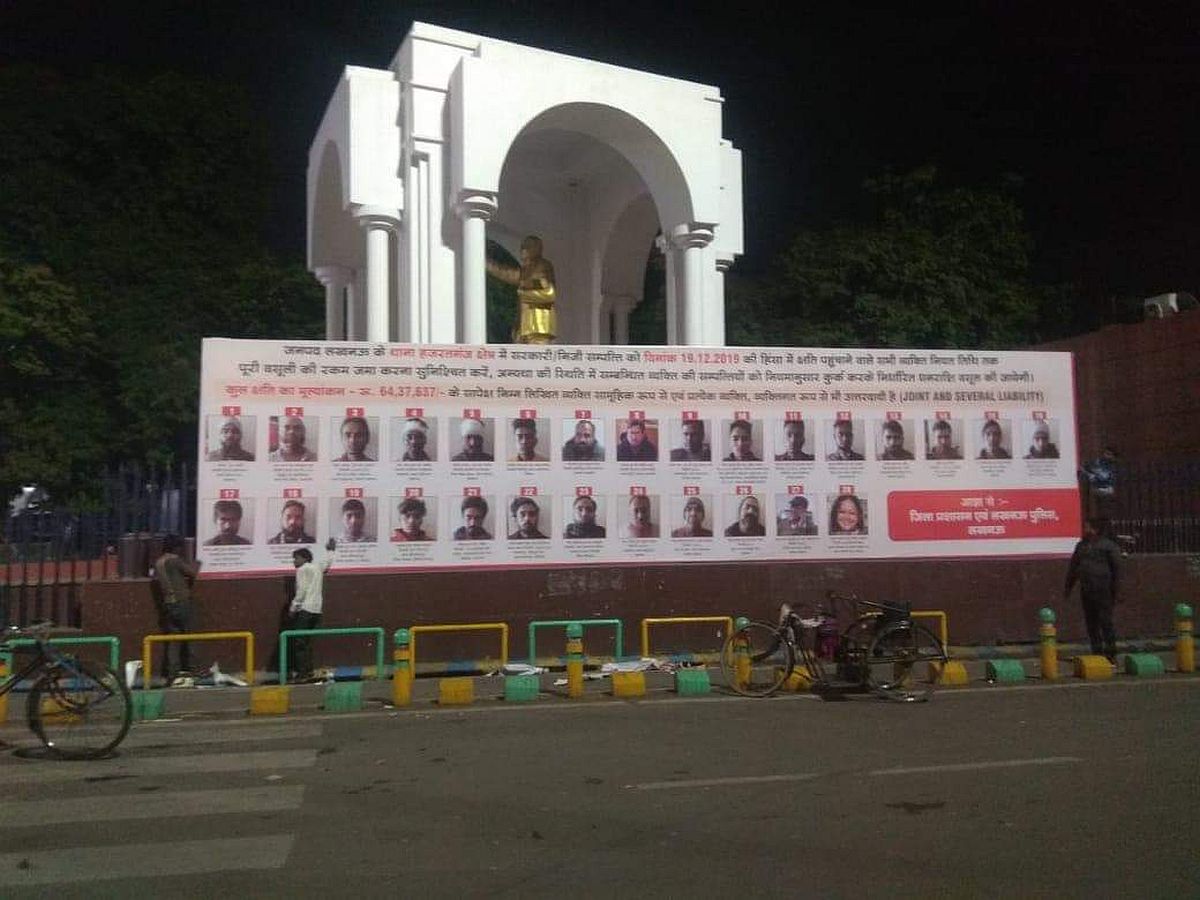UP CM says ‘historic’ win for Team India
CM Yogi wrote: "Historical victory .Greetings of Champions! Heartfelt congratulations to the people of the country!."
Ordering the removal of the hoardings, the court observed that the action by the UP government was an ‘unwarranted interference into the privacy of the people’.

A total of 100 hoardings were put up at all major crossings in Lucknow. (Photo: Twitter | @VasanthFocus)
In a setback for the Yogi Adityanath government, the Allahabad High Court on Monday ordered the removal of hoardings with names, addresses and photos of persons accused of violence during protests against the Citizenship Amendment Act (CAA) in December last year.
The high court further sought a report of the Lucknow administration on the matter by March 16.
Advertisement
Ordering the removal of the hoardings, the court observed that the action by the UP government was an “unwarranted interference into the privacy of the people”.
Advertisement
The Lucknow district administration had on Friday started the process to shame as many as 57 people, identified for being allegedly involved in violence during the anti-CAA protest, by putting up hoardings with their names and addresses.
A total of 100 hoardings were being put up at all major crossings in the city.
The persons are from Hasanganj, Hazratganj, Kaiserbagh and Thakurganj police station areas of the state capital.
The accused had also been asked to pay for the damages to public and private property within a stipulated time, or have their properties attached by the district administration.
However, in a surprise move, the Allahabad High Court on Saturday took suo moto cognizance of the Lucknow administration’s action.
Chief Justice Govind Mathur also expressed hope that corrective action would be taken before the hearing begins He asked if the state government was not encroaching on personal space and liberty of citizens.
Contrary to expectations, the hoardings were not removed on Monday.
On Friday, sources in the Chief Minister’s Office had sent an unsigned two-page note justifying the hoardings. They said they were put up keeping larger public interest in mind and after following all rules.
The UP government’s move had attracted strong reactions from protesters, political parties, ordinary citizens, legal experts and social activists, who slammed the idea of public shaming in this manner.
In one particular photograph put up on the hoardings, the photograph of a minor was also seen.
In January, a UP court, in a major setback for the government, had granted bail to 48 people accused of rioting and attempted murder by the state police during the violent December protests against the Citizenship (Amendment) Act or CAA.
Making some scathing observations against the police investigation, the judge had said: “The police FIR says the mob fired at the cops, but no evidence has been presented in court to show any recovery of weapons.
“The government lawyers have failed to produce any evidence in court that shows that anyone part of the mob fired at the police.”
“Nor proof has been presented that any private vehicles or shops were vandalized, the judge said.
The violence that broke out in many parts of the state between December 19 and 21 has claimed as many as 21 lives.
Chief Minister Yogi Adityanath had earlier in December said that his government will take revenge against those involved in the violence and will auction their properties to compensate for the losses.
Meanwhile, government sources have said that the state government would challenge the High Court verdict in the Supreme Court since Chief Minister Yogi Adityanath firmly believed that the name-and-shame hoardings would work as a major deterrent for those who damage public property.
Advertisement